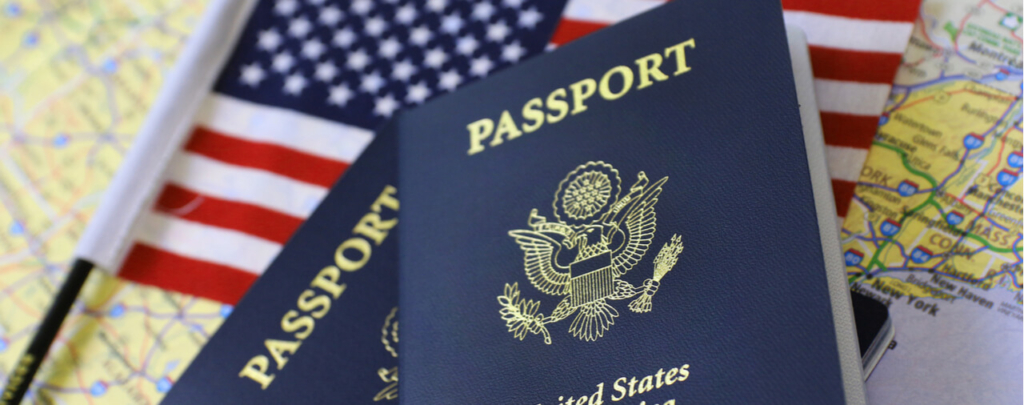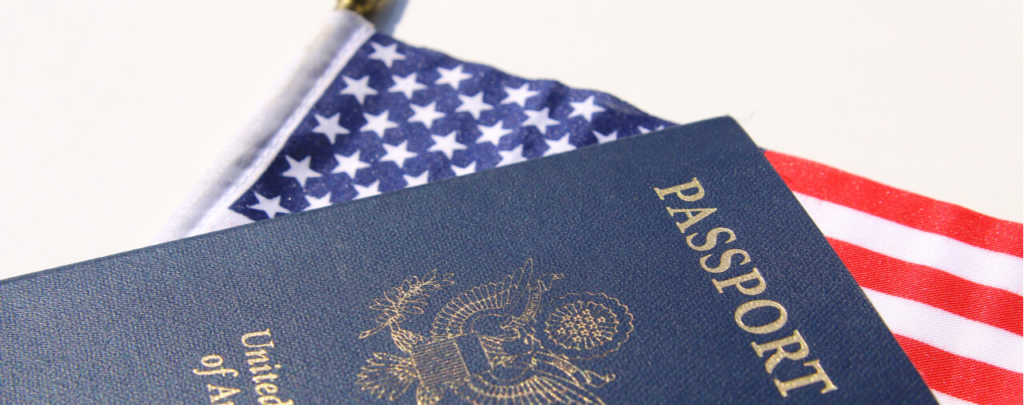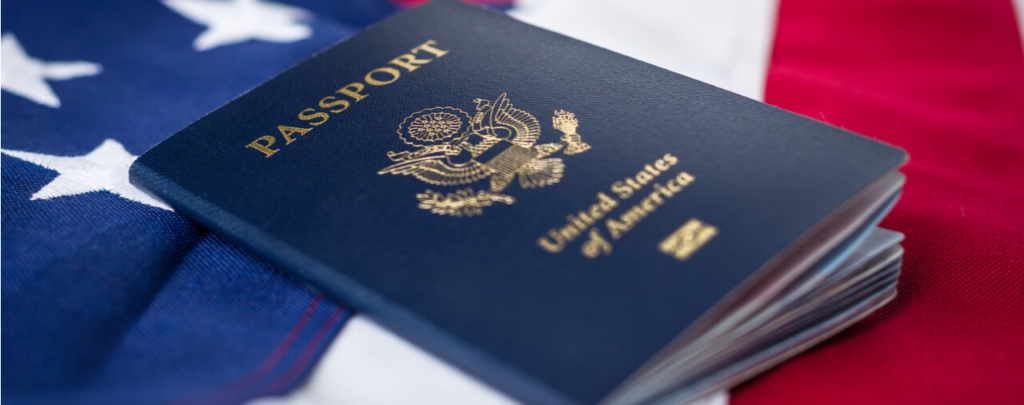- Introduction
- Current Law: INA § 320 — For Children Who Turn 18 After February 27, 2001
- Adoption Under INA § 320
- Old Law: INA § 321 — For Children Who Turned 18 Before February 27, 2001
- Children Residing Abroad: INA § 322
- Advice
Introduction
There are certain scenarios in which a child born abroad without U.S. citizenship at birth may become a U.S. citizen through the naturalization of one or both parents. The current law on this subject derives principally from the Child Citizenship Act of 2000 (CCA).1 For children who were 18 years of age before the effective date of the CCA on February 27, 2001, previous laws under the old INA § 320 guide the acquisition of citizenship. There are provisions for both children residing in the United States (INA § 320) and children residing outside of the United States (INA § 322). This article will explain the rules for the acquisition of citizenship by a child on account of the naturalization of one or both parents.
Persons who are born in the United States [see article] are U.S. citizens (USCs) from birth. Under many scenarios, persons born abroad with at least one USC parent [see article] are also citizens from birth. Please follow the links to learn more about the rules governing the automatic acquisition of citizenship from birth.
Current Law: INA § 320 — For Children Who Turn 18 After February 27, 2001
Pursuant to section 320(a) of the Immigration and Nationality Act (INA), a child born outside of the United States may automatically become a U.S. citizen (USC) if all of the following conditions are met:
(1) At least one parent of the child is a USC, whether by birth or naturalization.
(2) The child is under 18 years of age [as of February 27, 2001, the effective date of the CCA].
(3) The child is residing in the United States [see section] in the legal and physical custody [see section] of the USC parent pursuant to lawful admission for permanent residence [see section].
INA § 320(b) extends this provision to adopted children who meet the same three criteria. Thus, a child who is adopted by a parent is entitled to derivative citizenship as long as the conditions in INA § 320(a) are met. Follow this link to be directed to the section of this article where we address adoption in greater detail.
INA § 320(a)(3) contains three terms that are important to understand in detail:
Residing in the United States:
In order to satisfy this requirement, the child must be or have been admitted into the United States as a lawful permanent resident (LPR) on or after February 27, 2001. The child must be in the United States on LPR status in order to acquire citizenship under INA § 320(a) or (b).2 Thus, the statute is inapplicable to children who go to the United States solely to naturalize and then reside abroad.3 Pursuant to INA § 101(a)(33), “residence” means “the place of general abode.” However, please note that children of members of the U.S. military on active duty or U.S. government employees, even if living abroad, are considered to be “residing” in the United States.4
There is a general presumption that the USC parent has legal custody over the child where the child resides with two married parents, the child resides with a surviving natural parent where the other is deceased, or the child is born out-of-wedlock, but has been legitimized [where the qualifying parent is the USC father] and currently resides with the natural parent.5 For adopted children, the existence of a final adoption decree is sufficient to base legal custody upon.6 Where parents are separated, Courts will consider a USC parent to have legal custody where he or she has a joint custody [8 C.F.R. § 320.1]. If the USC parent resides in a state where the law recognizes joint custody without a formal agreement or court degree, an informal agreement between the parents may demonstrate that the USC parent has legal custody.7 In the absence of a joint custody agreement, the Department of Homeland Security (DHS) will consider a variety of factors to ascertain if the USC parent has legal custody.
Lawful Admission for Permanent Residence:
First Circuit held in 2009 that the child’s LPR status must have been lawfully obtained to satisfy INA § 320(a)(3).8
If the child is born to unmarried parents, he or she is entitled to derivative citizenship under current law if the mother is the qualifying parent under INA § 320(a).9 If the child is legitimized and all of the requirements in INA § 320(a) are met, the father may serve as the qualifying relative for purpose of derivative citizenship. As we will discuss in the next section, the laws for children born to unmarried parents are different for children who were older than 18 years of age prior to the effective date of the CCA.
Children born abroad through assisted reproductive technology may qualify for derivative citizenship under INA § 320(a) provided that the child’s gestational mother is recognized by the relevant jurisdiction as the child’s legal parent at the time of birth, and the child meets all of the other conditions in INA § 320(a) and (b) including that the child is residing in the United States in legal and physical custody of the USC parent.10 [Note: The same parental relationship requirement apples to INA § 322].
Step-children are not covered by INA § 320(a) because they are not defined as “children” pursuant to INA § 101(c).11 In order for a step-child to gain derivative citizenship through INA § 320(a), the step-parent would have to formally adopt the child and meet all of the conditions in INA § 320(a).
In order to obtain a certificate of citizenship, the parent(s) must file a Form N-600, Application for Certificate of Citizenship. The parents must submit all necessary evidence to satisfy the conditions in INA § 320(a) and (b) [if the child is adopted], including proof that the child has been admitted as an LPR.
Adoption Under INA § 320
In order to qualify as an adopted child for purpose of INA §§ 320(a) and (b), the child must, pursuant to INA § 101(b)(1)(E):
(i) be a child adopted while under the age of sixteen years if the child has been in the legal custody of, and has resided with, the adoptive parent(s) for at least two years, or if the child has been battered or subject to extreme cruelty by the adopting parent(s) or a family member of the adopting parent(s) residing in the same household; or
(ii) a child who is the natural sibling of a child described in INA § 101(b)(1)(E)(i); was adopted by the adoptive parent or parents of the sibling described in such clause or subparagraph or in INA § 101(b)(1)(F)(i), and is otherwise described in clause (i), except that the child was adopted while under the age of 18 years [note: significantly, this allows a child described in (ii) to qualify as an “adopted child” if he or she is formally adopted between the ages of 16 and 18].
Or pursuant to INA § 101(b)(1)(F):
(i) be a child under the age of sixteen at the time a petition is filed in his or her behalf to accord a classification as an immediate relative, who is an orphan because of the death or disappearance of, abandonment or desertion by, or separation or loss from, both parents, or form whom the sole or surviving parent is incapable of providing the proper care and has in writing irrevocably released the child for emigration and adoption; who has been adopted abroad by a USC and spouse jointly, or by an unmarried USC who is at least 25 years of age, who have or has complied with the preadoption requirements, if any, of the child’s proposed residence: Provided that the Attorney General is satisfied that proper care will be furnished the child if admitted to the United States.
(ii) a child who is the natural sibling of a child described in clause (i) who has been adopted abroad or is coming to the United States for adoption, by the adoptive parent(s) or prospective adoptive parent(s) of such sibling; and is otherwise described in clause (I) except that the child is under the age of 18 at the time a petition is filed on his or her behalf [note: this allows a child described in clause (ii) to qualify as an “adopted child” if he or she is formally adopted between the ages of 16 and 18.
The child must have been adopted prior to his or her 16th birthday (or 18th birthday in the case of siblings), resided with the parent for 2 years before his or her 18th birthday, and otherwise meet all of the conditions in INA § 320(a) after February 27, 2001. Provided that the conditions are met, the requirements for adopted children are the same as the requirements for other children under INA § 320(a). The following are rules for different types of adoptions.
First, let us restate the conditions in INA § 320(a):
(1) At least one parent of the child is a USC, whether by birth or naturalization.
(2) The child is under 18 years of age [as of February 27, 2001, the effective date of the CCA].
(3) The child is residing in the United States in the legal and physical custody of the USC parent pursuant to lawful admission for permanent residence.
General Case — Child Meets the Following Conditions After February 27, 2001, but Prior to His or Her 18th Birthday:
The child was adopted by the parent prior to his or her 16th birthday, or, if a sibling of a child who was adopted by the same parent prior to his or her 16th birthday, was adopted prior to his or her 18th birthday,
Resides with the parent for at least two years.
IR-3 and IH-3 (Orphan Adopted Abroad by USC) — Child Meets the Following Conditions After February 27, 2001, but Prior to His or Her 18th Birthday:
The child was admitted into the United States as an orphan (IR-3) or as a Hague Convention Adoptee (IH-3),
His or her adoption by the USC parent(s) was fully completed abroad.
IR-4 and IH-4 (Orphan to Be Adopted Abroad by USC) — Child Meets the Following Conditions After February 27, 2001, but Prior to His or Her 18th Birthday:
The child was admitted into the United States as an orphan (IR-4) or as a Hague Convention Adoptee in order to have his or her adoption completed by USC parent(s) while in the United States,
His or her adoption as completed before his or her 18th birthday.
Old Laws Before the CCR — For Children Who Turned 18 Before February 27, 2001
Children who turned 18 years of age before the effective date of the CCR on February 27, 2001, may only obtain derivative citizenship under the old statutory provisions that were found in then INA § 321. These provisions apply to children who were under 18 years of age at any time between December 24, 1952 and February 27, 2001, but not after February 27, 2001 [in which case the child is eligible under the provisions of the CCA found in INA § 320(a) and (b)].
Under the former INA § 321, a child may acquire citizenship if his or her parents meet any of the following conditions:
Both parents naturalize;
One surviving parent naturalizes if the other parent is deceased;
One parent naturalizes who has legal custody of the child if there is a legal separation of the parents; or
The child’s mother naturalizes if the child was born out of wedlock and paternity has not been established by legitimization.
Furthermore, the child must have been under the age of 18 when the parent(s) naturalized. The child must also be residing in the United States while admitted as an LPR when the parent is naturalized or thereafter begins to reside permanently in the United States.12 The statute was amended in 1978 to apply the same to adopted children pursuant to the definition of adopted child found in INA § 101(b).
The most significant difference between INA § 320 and the old INA § 321 is that INA § 321 required parents to be legally separated or divorced if the child was in the custody of only one parent and the other parent is alive. Please consult the following table, courtesy of United States Citizenship and Immigration Services (USCIS) to learn more about when INA § 320 is the relevant statute and when the old INA § 321 is the relevant statute:
Nationality Chart 3: Derivative Citizenship of ChildreN
A child may derive U.S. citizenship during the below listed historical periods if such child was under the statutory age, AND the child was lawfully admitted for permanent residence, AND the parent(s) naturalized. It does not matter in which order the actions occurred.
| PERIOD IN WHICH LAST ACTION TOOK PLACE | CHILD BECAME AN LPR BEFORE STATUTORY AGE OF: | NATURALIZATION OF PARENT(S) PRIOR TO CHILD’S STATUTORY AGE | ADDITIONAL REMARKS |
|---|---|---|---|
| Prior To May 24, 1934 | Age 21 | At least one parent naturalized | None |
| On or After May 24, 1934 and Prior To Jan. 13, 1941 | Age 21 | At least one parent naturalized | U.S. citizenship effective 5 years from date child becomes an LPR ** |
| Age 21 | Both parents* naturalized | None | |
| On or After Jan. 13, 1941 and Prior To Dec. 24, 1952 | Age 18 | Both parents* naturalized | Child born out of wedlock derived on 12/14/52 if under age 16 and had remained an LPR |
| On or After Dec. 24, 1952 and Prior To Oct. 5, 1978 | Age 18 | Both parents* naturalized | Child unmarried |
| On or After Oct. 5, 1978 and Prior To Feb. 27, 2001 | Age 18 | Both parents* naturalized | Child unmarried (includes child adopted before age 16 who is residing with adoptive parent(s) at time of their naturalization |
| On or After Feb. 27, 2001 | Age 18 | At least one parent is a USC by birth or naturalization | Child resides in U.S. in legal and physical custody of USC parent (includes adopted child of USC must meet INA 101(b)(1) requirements for adopted children) |
Notes
* The definition of “both parents” includes the:
Surviving parent should one die; or
Parent having legal custody where there has been a legal separation or divorce; or
Alien parent who naturalizes when the other parent is already a USC; or
Mother of a child born out of wedlock (as long as the child has not been legitimated).
Exceptions: child born on or after 1/13/41 and prior to 12/24/52; and child born on or after 2/27/01.
** Child relieved of the remainder of the 5-year wait if the naturalized parent comes to meet definition of “both parents.”
Source: “USCIS Policy Manual,” USCIS, July 21, 2015, available at http://www.uscis.gov/policymanual/PDF/NationalityChart3.pdf [also available at link]
Children Residing Abroad: INA § 322
Under certain circumstances, a USC parent or, if the parent has died during the preceding 5 years, a USC grandparent or legal guardian, may apply for derivative citizenship behalf of a child born outside of the United States who has not acquired citizenship automatically under INA § 320. Accordingly, this provision, like INA § 320, applies to children who turn 18 after February 27, 2001. In order for citizenship to be granted under INA § 322, the following must be true:
- (1) At least one parent (or, at the time of his or her death, was) is a USC, whether by birth or naturalization.
- (2) The USC parent-
- (A) has (or, at the time of his or her death, had) been physically present in the United States or its outlying possessions for a period or periods totaling not less than five years [may count time spent abroad serving under official orders in the U.S. armed forces], at least two of which were after attaining the age of fourteen years; or
- (B) has (or, at the time of his or her death, had) a citizen parent who has been physically present in the United States or its outlying possessions13 for a period or periods totaling not less than five years, at least two of which were after attaining the age of fourteen years.
- (3) The child is under eighteen years of age [after February 27, 2001, and where other conditions in INA § 322 are met].
- (4) The child is residing outside of the United States in the legal and physical custody of the applicant (or, if the citizen parent is deceased, an individual who does not object to the application).
- (5) The child is temporarily present in the United States pursuant to lawful admission, and is maintaining such lawful status.
Pursuant to INA § 322(c), this applies the same to persons who meet the definition of “adopted children” found in INA § 101(b)(1) and meet all of the other requirements.
The INA § 322 process generally cannot completely take place overseas. In order to be naturalized, the child must be lawfully admitted to the United States in any status, and be physically present for the completion of the process [8 C.F.R. § 322.2(a)(5)]. The child is required to maintain the lawful status he or she was admitted with while in the United States. However, pursuant to INA §§ 322(d)(1) and (2), a child of a member of the U.S. Armed Forces who is authorized to accompany and reside abroad with the U.S. Armed Services member pursuant to his or her official orders shall have that period of time counted as “physical presence,” and not have to be admitted into the United States to complete the application process. Being admitted as a parolee does not make the child eligible for citizenship under INA § 322.14
If the child would have had to rely upon a USC grandparent, but the USC grandparent is deceased, the child is still eligible for citizenship under INA § 322 provided that all other requirements are met, including the grandparent being physically present in the United States at the time of his or her death.15
In order to obtain citizenship under INA § 322, the child or his or her guardian must file the Form N-600K, Application for Citizenship and Issuance of Certificate Under Section 322. However, it must be demonstrated that the child only needs to demonstrate lawful admission rather than LPR status as required for INA § 320.
Advice
Due to the extensive documentary requirements for INA §§ 320 and 322 and for the old INA § 321, parent(s) should consult with an experienced immigration attorney for guidance through each step of the process. For INA § 320, derivative citizenship is automatic, and thus a Form N-600 is not required for the child to be a citizen. However, it is crucial to obtain a certificate of citizenship to avoid complications for the parent(s) and child. INA § 320 derivative citizenship may be complicated in cases where there is only one USC parent, and the parent does not clearly have custody, or where the child was adopted. INA § 321 derivative citizenship will be especially complicated in scenarios where the child resided with only one parent while both parents were living.
Obtaining a certificate of citizenship under INA § 322 requires the demonstration of presence in the United States by the parent, grandparent, or legal guardian of the child, and the admission of the child into the United States to complete the application process. An experienced immigration attorney may help his or her clients navigate the somewhat complicated conditions required by INA § 322.
- Pub. L. 106-395 Child Citizenship Act of 2000
- I. Kurzban, Kurzban’s Immigration Law Sourcebook: A Comprehensive Outline and Reference Tool (AILA 14th Ed. 2014) 1792, citing 66 FR at 32139
- Kurzban 1792, citing Cable, DOS, 05-State-050940 (Mar. 22, 2005), published on AILA InfoNet at Doc. No. 05090766
- Kurzban 1792, citing 9 FAM 42.22 N.9.
- Kurzban 1792, citing Matter of Rivers, 17 I&N Dec. 419, 421 (BIA 1980)
- Kurzban 1792
- Kurzban 1792, citing Pina v. Mukasey, 542 F.3d 5 (1st Cir. 2008)
- Kurzban 1792, citing Walker v. Holder, 589 F.3d 12 (1st Cir. 2009)
- Kurzban 1793, citing Memo, Yates, Acting Assoc. Direction, BUSCIS, HQ 70/34.2-P (Sept. 26, 2003)
- USCIS Policy Manual, USCIS, Volume 12, Chapter 5 at A
- Kurzban 1793, citing Matter of Guzman-Gomez, 24 I&N Dec. 824 (BIA 2009); AFM at 71.1(b); Letter, Lacot, Acting Director, Business Process and Re-engineering, Immigration Services Division, HQ 70/33 (Aug. 8, 2001), reprinted in 78 No. 32 Interpreter Releases 1350, 1369-70 (Aug. 20, 2001)
- USCIS Policy Manual, Volume 12, Chapter 5 at C
- American Samoa or Swains Island
- Kurzban 1794, citing 9 FAM 41.31 N14.6-4
- Kurzban 1794, citing Memo, Yates, Acting Assoc. Direction, BUSCIS (Apr. 17, 2003), published on AILA InfoNet at Doc. No. 03042240
FORMS:
N-600, Application for Certificate of Citizenship [PDF version]
N-600K, Application for Citizenship and Issuance of Certificate Under Section 322 [PDF version]
Sources:
Kurzban, Ira J. Kurzban’s Immigration Law Sourcebook: A Comprehensive Outline and Reference Tool. 14th ed. Washington D.C.: ALIA Publications, 2014. 1792-94, Print. Treatises & Primers.
“USCIS Policy Manual,” USCIS, July 21, 2015, Volume 12, Chapters 5 and 6, available at http://www.uscis.gov/policymanual/HTML/PolicyManual.html [also available at link]





